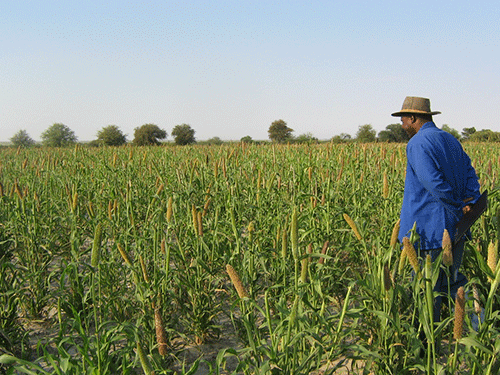The agricultural sector remains resilient amidst existing and Covid-19-related challenges, expanding by 5.9% in the third quarter of 2021, compared to the contraction of 7.1% in the same period during 2020.
This growth can be attributed to improved land for crop cultivation that posted a double-digit growth of 11.6%, and a recovery in livestock farming at 4.6% during the third quarter of 2021.
This is according to the latest Market Watch report released by AgriBank.
The report states that overall, the sector is projected to contract by 1.3% at the end of 2021 due to depressed marketing activities in the livestock subsector. The sector is expected to improve during 2022 as livestock marketing improves on the back of better rangeland vegetation, coupled with better rainfall benefiting the crop and agronomy industries.
Transport inflation remains on an upward trajectory as a result of increased global Brent crude prices, while petrol and diesel prices in Namibia surged by 36% in December 2021. Continuous increases in petrol prices have a ripple- effect on logistics, particularly farmers who regularly transport agricultural products such as animals to auctions, and vice versa.
Further increases in petrol prices have a negative impact on the cost of production, resulting in final price inflation pressure on the end-consumer, the report states. Although high prices might be beneficial to selling farmers, the net return on investment is affected by the high input costs (like feed). Due to a low supply of marketable animals during 2021, the price of meat increased significantly by 11.8%.
High prices were observed at both producer and consumer levels. Similarly, challenges faced in the poultry industry translated into an increase in chicken prices on the shelves by 21.4%, exerting more pressure on the end-consumer.
Fruits were highly demanded during Covid-19 peak infections, particularly citrus. As a result, fruits’ inflation remained elevated, increasing by 14.9% in December 2021 on the back of increasing demand amidst low supply. Only 4% of fruit consumed is locally-produced. Therefore, investment in fruit production remains crucial for product diversification.
On the overall economic front, the Namibian economy registered a 2.4% growth in the third quarter of 2021, a significant improvement from a decline of 12.3% recorded in the same period in 2020. The mushrooming of economic activities was also observed across all sectors, with double- digit growth rates in mining (41.9%) and hotels and restaurants (19.5%). Poor performances were, however, observed in the construction (-43.7%) and financial services’ (-10.9%) sectors.
Namibia’s economic performance is anticipated to improve slightly in 2022. Higher commodity prices, coupled with the new diamond vessel, will drive the mining sector, while the growth in manufacturing will be propelled by increases in the processing of meat and crop products, coupled with asn increased beverage production.


